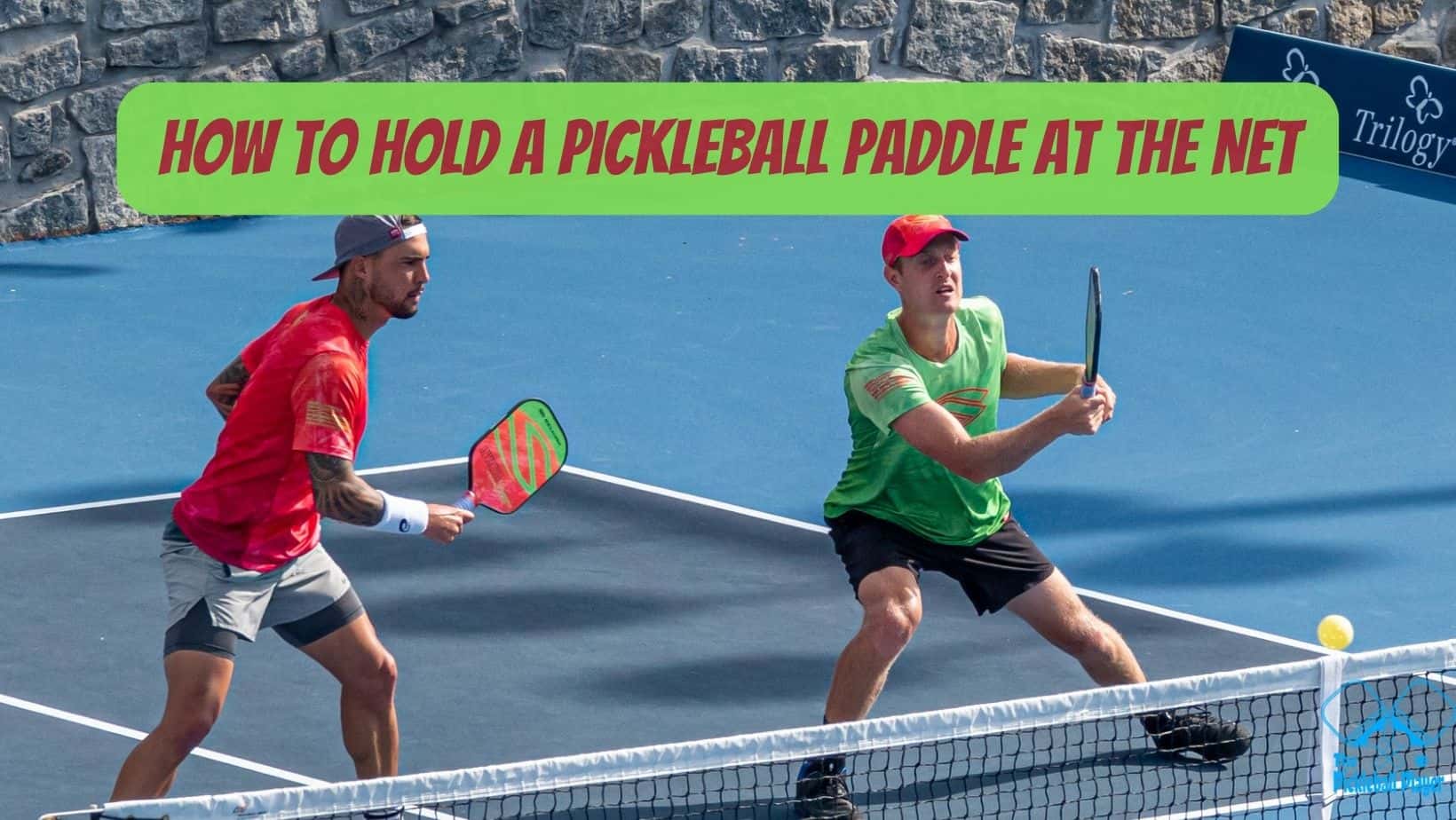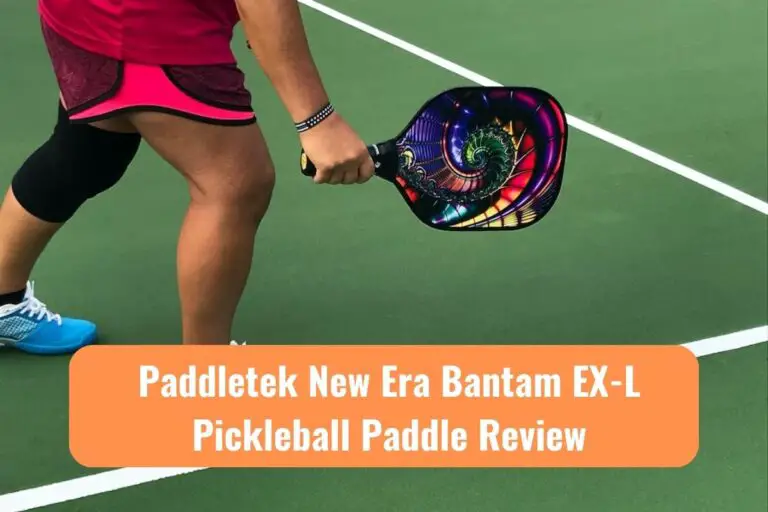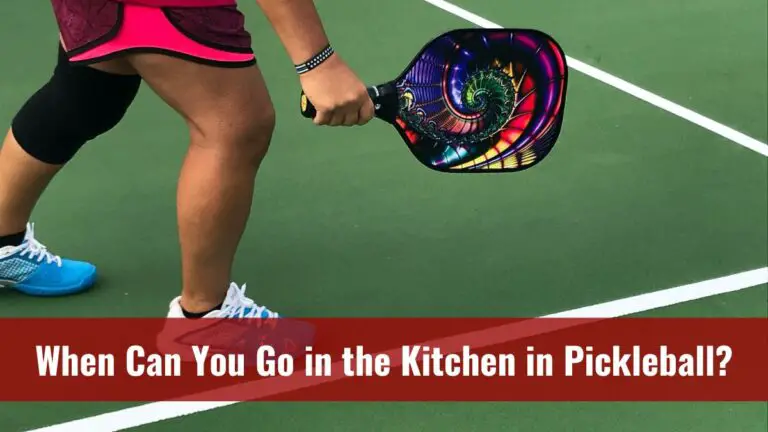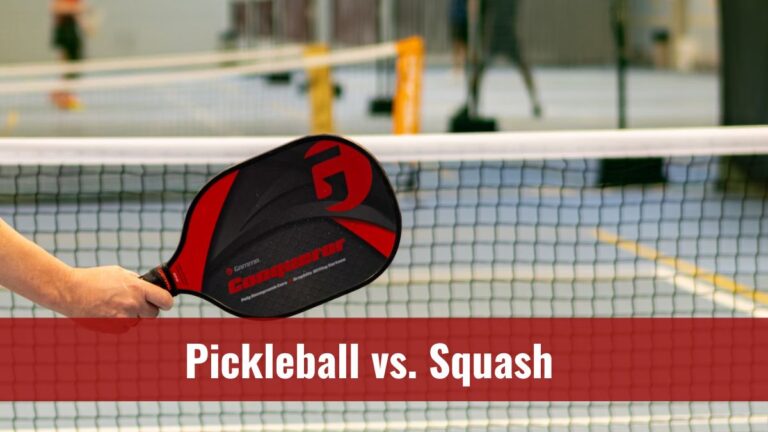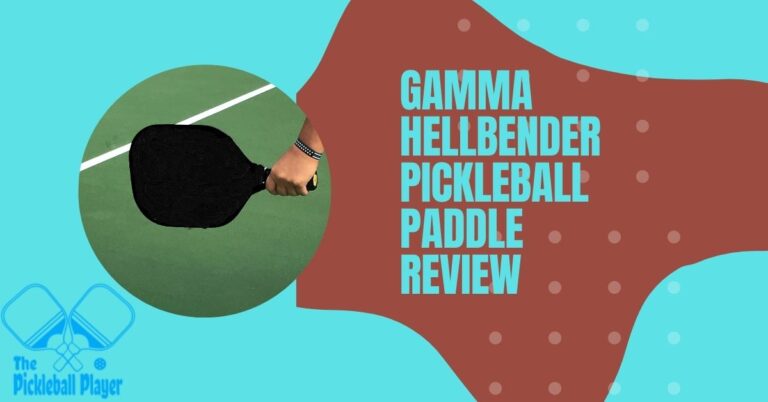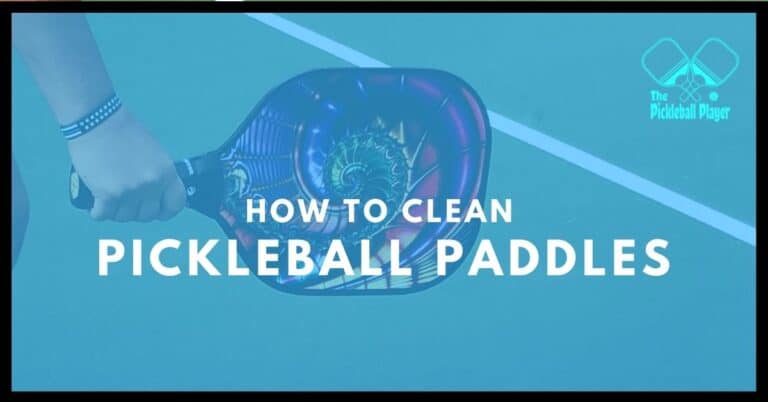How to Hold a Pickleball Paddle at the Net?
Pickleball is fast-paced, mainly played close to the kitchen and net. So if you are not quick enough at the net with your body and paddle maneuverability, you will miss several points. However, what really makes hitting the ball easy is how you position yourself and hold a pickleball paddle at the net.
If you think it’s fine to hold a pickleball paddle as you like because you can still hit good shots, you’re probably wrong.
You can practice shooting eight hours a day, but if your technique is wrong, then all you become is very good at shooting the wrong way. Get the fundamentals down, and the level of everything you do will rise.
Michael Jordan
Therefore, a correct technique for holding the paddle and positioning yourself at the net is vital.
We will discuss where you should keep a paddle and how to get in a ready position and grip the paddle correctly.
Table of Contents
- Stand in the Ready Position at the Net
- How to Hold a Pickleball Paddle at the Net
- Use Backhand Over Forehand at The Net
- Why It’s Important to Hold a Pickleball Paddle at the Net Correctly?
- The Best Grip to Hold a Pickleball Paddle at the Net
- The Bottom Line
When on the pickleball court, you must stand in a ready position near the net. So, what is the “ready position”?
The ready position is how you stand and prepare for the coming shot. If you have experience in other racket sports, you already know how to stand.
Keep your feet apart near the kitchen line, flex the knees, chest, and paddle up, and hold the paddle in a continental grip. Now you are ready for the shot.
An important point in your ready position is to keep your paddle at your waist level. It will help you to respond at lightning speed without fumbling. There are two reasons for that.
- You are supposed to play the shots that are below your chest level. If the ball is higher than that, it is a let-go. Therefore, holding the paddle close to your chest doesn’t make sense. Especially when you are supposed to defend the lower shots. This paddle position provides excellent maneuverability to defend lower shots with speed and the ability to hit the pickleball harder.
- This position is ideal for backhand and forehand shots. In a non-volley zone, the quick hand is all that matters, or you will lose the chance of winning. If you bend your knees and hold the paddle in front of your belly button, it helps you to be swift for backhand and forehand.
One common mistake we often see players make is that they ease up, especially in doubles. Typically, players put their paddle down while waiting for the shot to come. If you are also doing it, this is the biggest mistake.
The reason is that you won’t have the time to maneuver the paddle in time to get that shot. So, if you are not disciplined near the net, there is a big chance you will miss or fumble with the shot.
How to Hold a Pickleball Paddle at the Net
Standing in a ready position is not enough unless you know how to hold your paddle at the net correctly. There are three basic positions in which you can take.
Compare their pros and cons and determine which position is best for you.
1. Twelve O’Clock Position
Many players hold their paddle in a 12 O’clock position. In this position, the edge guard point toward the opponent. You can also call it a neutral position. You stand straight while holding a paddle without showing its face to your opponent.
It can be a good position for backhand shots. But, it will slow you down at the net, especially when you try to hit your left and right shoulder shots. Taking the time to move the paddle from the 12 O’clock position to hit higher shots will harm the quality of your volley.
2. Nine O’Clock Position
Another common way of holding a paddle is at 9 O’clock. You make a triangle with your elbow while holding a paddle in front of your body. This triangle is also called the chicken wing.
With this position, it’s easy to return the volley at your left side (for right-hand players) and right (for left-handed players). It is an excellent position for backhand. However, your chicken elbow is exposed, and if the ball goes there, you won’t be able to play it properly.
3. The Position Most Professionals Prefer
We find another position which most of the professionals and trainers prefer. It is holding your paddle away from your torso in the backhand style at the 10 o clock position. In this position, you can defend the area around your body with your backhand and forehand.
This position allows you to move rapidly for both backhand and forehand while maintaining the form and quality of the dink.
Use Backhand Over Forehand at The Net
The backhand grip is ideal when you are at the net. It allows fast paddle movement. You can be quick to defend most of the body shots. With backhand, you can easily play the shot coming at you and your feet.
On the other hand, holding a paddle in the forehand will slow you down and leave you vulnerable to body shots. You won’t be able to bring the paddle in front of your body within seconds and use a quick hand for an effective volley.
Why It’s Important to Hold a Pickleball Paddle at the Net Correctly?
While standing at the kitchen line, you are only fourteen feet away from your opponent. Balls come at you with speed. Thus, you can’t take the risk of losing focus or dawdling. To maintain that speed and agility, you should always hold a paddle where you can quickly move it for backhand and forehand dink.
You need complete focus, fast maneuverability, and quick hands to win a volley. Many players got hit by the ball near the kitchen line due to a quick game. Thus, if they are not in the ready position with their correct paddle position, they can get hit by the ball. To prevent body shots, which cost you a point even if they don’t cause injury, holding a paddle correctly near the kitchen line is the key.
The Best Grip to Hold a Pickleball Paddle at the Net
Another aspect of hitting the perfect volley at the net is griping your paddle properly. If your paddle and body are in the correct position, the only thing left is gripping the paddle.
As we all know, the pickleball game can be very fast at the net. Furthermore, you have to use your forehand and backhand. The correct grip will determine the speed and trajectory of the ball. There are three main grips.
1. Continental Grip
Continental grip is common among pickleball players. You hold your paddle like you are holding a hammer. Hence, it is also called a hammer grip. It is best for almost all types of players-from beginners to pros. You can play backhand and forehand shots easily with this grip.
2. Eastern Grip
Eastern grip is the most common among beginners. In this grip, you hold your paddle as if shaking hands with someone. It is a neutral grip and allows you to hit backhand and forehand.
3. Western Grip
Western pickleball grip is like an eastern grip with a 90-degree rotation. It is excellent for players who have a strong forehand. Your palm supports the hits. Yet, it may not be a perfect grip for players with a solid backhand.
Why is Continental Grip the Best Option at the Kitchen Line?
Continental grip is the best option, especially near the kitchen. It helps you with dinks and volleys and allows you to hit strong backhand and forehand.
Success and failure depend on how fast you move from backhand to forehand and vice versa. This grip allows you to do all that without hurting your wrist or shoulder.
The Bottom Line
We hope this article clears all your doubts and answers your questions. Holding a paddle at the net in a ready position is a fundamental skill you should practice.
Don’t go to any extremes when it comes to holding a paddle in the correct position. Instead, use a position that allows you an equal advantage for backhand and forehand.
And the last thing is grip. Try learning the continental grip, even if you are from other racket sports with different grip styles.
These guidelines will help you improve your game and become a better pickleball player.

